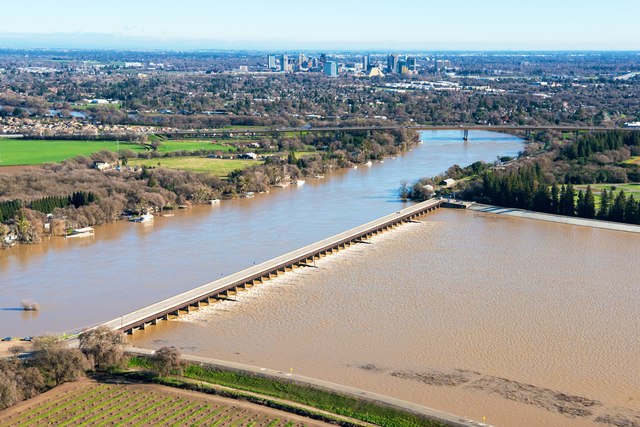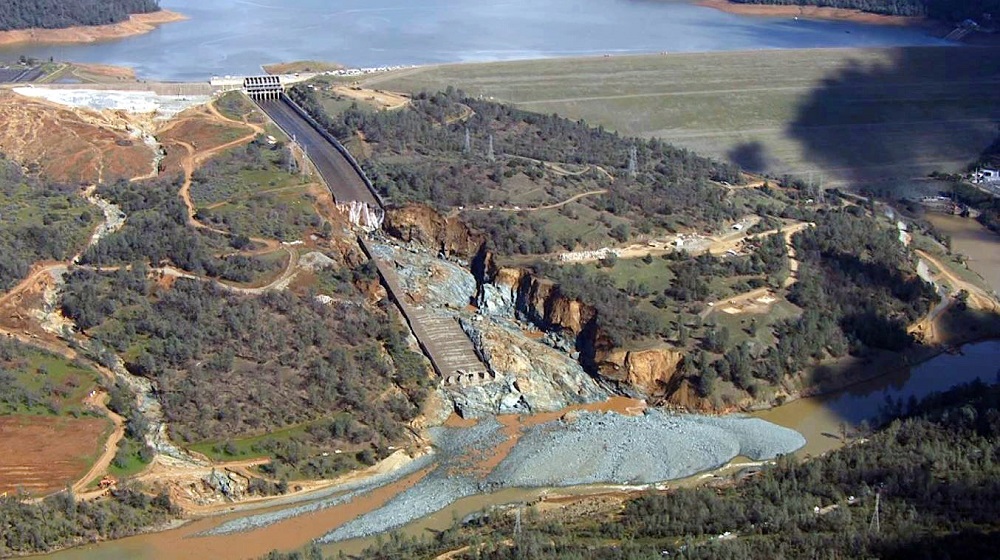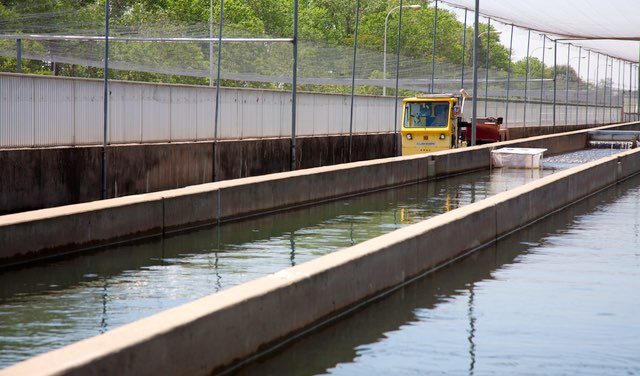From Sportfishing
Fish Report for 3-11-2017

Yolo Bypass: The Inland Sea of Sacramento
3-11-2017
Megan Nguyen
LAND OR SEA? The recent rains early this year brought much-needed relief from the five-year drought in California. Reservoirs are full, mountains are covered with snow and flood control structures are being used, some for the first time since 2006. Interstate 80 causeway commuters frequently, though perhaps unknowingly, witness one of the most important floodplains in California – the Yolo Bypass, which is now filled with water as far as the eye can see.
The recent events at Oroville Dam help highlight the Yolo Bypass’ vital role in flood protection for the Sacramento area. Despite the risk of flooding from the potential failure of Oroville Dam’s emergency spillway in February, flood control managers and experts emphasized the limited risk to the Sacramento area. The bypass was a big reason why communities near Sacramento didn’t experience the same risk as those closer to the dam. Understanding the bypass helps explain why it functions so well in our regional flood-control strategy. But it also emphasizes the scale of protection needed for a low-lying area like Sacramento.
Sacramento Valley and San Joaquin Valley historically flooded from major rainstorms or snowmelt. Most major floods in California are caused by “atmospheric rivers” from the Pacific Ocean. Atmospheric rivers are warm, intense streams of tropical moisture that often produce several days of heavy precipitation in the Central Valley and over the mountains of California.
Prior to construction of large flood infrastructure and coordinated flood management, seasonal runoff would often cover the valley floor. Historically, floods could reach as large as 600,000 cubic feet (17,000 cubic meters) per second (cfs) near Sacramento (one cubic foot is about the size of a basketball). Snow melt from the mountains and heavy rainfall would often overtop the river banks. Following hydraulic mining in the 1800s, immense quantities of sediment began to deposit in the river channels of the valley floor. The sediment essentially filled the river channels and left no place for flood water to go. The resulting floods covered large areas of the valley floor to great depth, with large property damage and loss of life.
To prevent future flood damage such as what happened in the flood of 1907, the state of California through the Central Valley Flood Protection Board and the Army Corps of Engineers developed the Sacramento River Flood Control Project (SRFCP). The SRFCP is a system of flood-relief structures and weirs that release Sacramento River and Feather River flows into a bypass system when flows exceed downstream channel capacity.
The most downstream of the bypasses and a critical component of the SRFCP, the Yolo Bypass is a 59,000-acre (240 square km) floodway that serves as a flood relief valve and protects Sacramento and southern Sacramento Valley from seasonal inundation. At 3 miles (4.8km) wide and 40 miles (65km) long, the bypass can carry up to four times the flow of the river’s main channel during large floods. The bypass lies within the Sacramento River’s historical floodplain and conveys floodwaters from major valley rivers including the Sacramento, American and Feather Rivers, and west-side tributaries: Knights Landing Ridge Cut, Cache Creek, Willow Slough and Putah Creek. The bypass is designed for a capacity 500,000 cfs at the downstream end.
Weirs are lower, armored sections of levees that are used to divert high river flows through bypasses and ultimately to the Sacramento-San Joaquin Delta. Major weirs in the Yolo Bypass include the Fremont and Sacramento Weirs.
The Fremont Weir is 2 miles (3km) long and marks the beginning of the Yolo Bypass. The Fremont Weir is passive, meaning that no management is needed to allow flood water to overflow into the bypass. Overflow waters of the Sacramento River, Sutter Bypass and the Feather River run into the Yolo Bypass with a design capacity of 343,000 cfs.
Unlike the Fremont Weir, the Sacramento Weir is manually opened during high flow events. It consists of 48 gates that must be opened with a long hooked pole. The weir was designed primarily to protect the City of Sacramento from excessive flood stages in the Sacramento River channel downstream of the American River. The Sacramento Weir can divert a maximum flow of 112,000 cfs. This year, the Sacramento Weir opened for the first time since 2006.
Although flood control is the major function of the Yolo Bypass, the bypass is a multi-benefit landscape. During the non-flood season, agriculture and wildlife management are the main activities in the bypass. Agriculture in the Yolo Bypass is predominantly rice farming. The largest contiguous area of non-agricultural floodplain habitat is the Vic Fazio Yolo Bypass Wildlife Area, managed by California Department of Fish and Wildlife. At 16,600 acres (67 square km), this area is a haven for waterfowl, shorebirds and wading birds, neotropical migratory birds, raptors, invertebrates, snakes, turtles, toads and bats. Vegetation community types include managed seasonal and permanent wetland, natural seasonal wetland, natural perennial wetland and riparian woodland.
An often unnoticed benefit of the flooded landscape is the benefit for juvenile salmon. During winter floods, juvenile salmon are washed down from upstream rivers into the productive habitats of the Yolo Bypass. Juvenile salmon grow much faster on the bypass compared to the river channel that runs through Sacramento River. Even though it is hard to observe while stuck in traffic, the thriving aquatic ecosystem in the flooded bypass is much richer than the river not far away.
A flooded Yolo Bypass is a sign that the Sacramento River Flood Control System is working to protect the greater Sacramento area from flooding. Although less tangible, the Sacramento Flood Control System also serves a valuable ecosystem benefit by mimicking some of the historic flooding within a more controlled, human-friendly environment. With more wet months to come in 2017, the bypass will continue to remain an inland sea. So the next time you are stuck in traffic on the causeway, take a moment to appreciate the amazing multi-benefit environment below you.
< Previous Report Next Report >
More Reports

3-8-2017
CALIFORNIA WATER OFFICIALS had another tool at their disposal to help empty Lake Oroville before damages to the spillway led to...... Read More

2-21-2017
DAYS BEFORE NEARLY 200,000 people downstream of Lake Oroville were ordered to evacuate because of problems with two spillways at the...... Read More

Website Hosting and Design provided by TECK.net